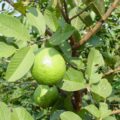Afang leaf, scientifically known as Gnetum africanum is a popular vine that grows in the Southern part of Nigeria. This leaf is named Afang by the Efik and Ibibio of South South Nigeria, Ukazi or Okazi by the Igbo people of South East Nigeria and Ajobaje or Ajakotale by the Yoruba people of South West Nigeria.
Afang leaf contains healthful vitamins, minerals, and dietary fiber which comes with many exceptional benefits. The leaves have great culinary value in West Africa. They are eaten raw as local salad, and shredded and used in preparing soups and stews. It is a good source of protein and has been noted as an anti-inflammatory, anti-carcinogenic, and antioxidant.
Afang leaf may offer more health advantages to certain people, depending on their diets, overall health, and nutritional needs. The Following are some of the health benefits of afang leaf:
Lowers High Blood Pressure: Afang leaf, is well known for its hypolipidermic properties, which can help lower high blood pressure. A meta-analysis of cohort studies following 469,551 participants found that a higher intake of nutrient rich vegetables like Afang or Okazi is associated with a reduced risk of death from cardiovascular disease, with an average reduction in risk of 4% for each additional serving per day .
Enlarge Spleen treatment: The spleen is a small organ usually about the size of your fist. But a number of conditions, including liver disease and some cancers, can cause your spleen to become enlarged. Afang leaf is a good source of powerful antioxidants which has been shown to be helpful in the treatment of spleen problems.
Treatment of sore throat: Studies reveal that this plant has antifungal and antibacterial potentials which explain why it is used in the treatment of sore throat and other respiratory conditions. Sore throat symptoms include pain, burning, or scratching sensations at the back of the throat, pain when swallowing, and tenderness in the neck.
Treatment of Piles: Piles are collections of tissue and vein that become inflamed and swollen. The size of piles can vary, and they are found inside or outside the anus. Piles occur due to chronic constipation, chronic diarrhea, lifting heavy weights, pregnancy, or straining when passing a stool. Afang leaf has been used for decades in the treatment of piles.
Anti Poison and Remedy for Nausea: In DR Congo, Afang leaf is eaten as a treatment against nausea and is considered antidotal against arrow-poison based on Parquetina nigrescens. Nausea is stomach discomfort and the sensation of wanting to vomit. Nausea can be a precursor to vomiting the contents of the stomach. The condition has many causes and can often be prevented using afang leaf.
Prevent drunkenness: In Cameroon, afang leaf are chewed to mitigate the effects of drunkenness and they are taken as an enema against constipation. Afang leaf contains indigestible fiber, which absorbs water and expands as it passes through the digestive system. This can calm symptoms of an irritable bowel and by triggering regular bowel movements, can relieve or prevent constipation. The bulking and softening action of insoluble fiber also decreases pressure inside the intestinal tract and may help prevent diverticulosis.
Management of Diabetes: Diabetes is a chronic disease that occurs either when the pancreas does not produce enough insulin or when the body cannot effectively use the insulin it produces. Insulin is a hormone that regulates blood sugar. As a good source of protein and antioxidants, studies indicate that Afang/ okazi is helpful in the management of this condition. Additionally a study of over 70,000 female nurses aged 38-63 years, who were free of cardiovascular disease, cancer, and diabetes, showed that consumption of green leafy vegetables like afang was associated with a lower risk of diabetes.
Child Birth: The stem of Afang is cut up into small pieces and infused to produce a tisane that is taken to ease childbirth and reduce the pain ( labor pains).
Is Okazi leaf good for a pregnant woman?
The consumption of Afang or Okazi leaf during pregnancy has been shown to be safe when consumed in moderate amounts. Dark, leafy greens are packed with vitamins and minerals that expectant mothers and their babies need. They have vitamins A, C, K, and E, as well as calcium, iron, fiber, and folate. Folate is a B vitamin that protects against birth defects.
What are the side effects of Afang leaf?
Despite its many medicinal and health properties, afang leaf can exert some cyanotoxic effects as well as the suppression of the haemopoietic system. The hematopoietic system consists of organs and tissues, primarily the bone marrow, spleen, tonsils, and lymph nodes involved in the production of blood. There are three primary functions of hematopoiesis, including oxygen delivery, hemostasis, and host defense. Read: Health Benefits of Utazi Leaf





